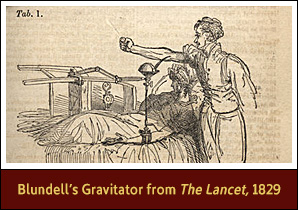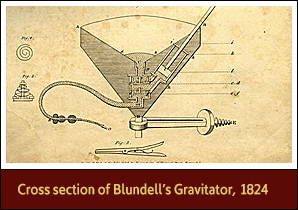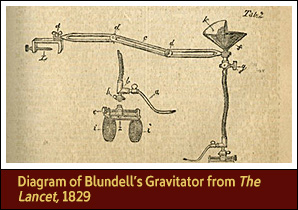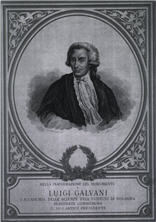ExhibitionBoundary Crossing / 1818
Return to Exhibition



- Blundell’s Gravitator from The Lancet, 1829

Blundell’s Gravitator from The Lancet, June 13, 1829
Courtesy National Library of Medicine
The medical journal The Lancet recorded the dramatic success of blood transfusion. Reporting on a woman who received her husband’s blood, the journal noted, ”Life seemed to be immediately reanimated as by an electric spark.”
- Cross section of Blundell’s Gravitator, 1824

Cross section of Blundell’s Gravitator from Researches Physiological and Pathological, 1824
Author: James Blundell (1790–1878)
Courtesy National Library of Medicine
James Blundell developed a copper cup with a metal handle to collect blood and funnel it from the donor to the recipient. After a woman received a few ounces of her husband’s blood, the medical journal, The Lancet, noted in 1834, “Life seemed to be immediately reanimated as by an electric spark.”
- Diagram of Blundell’s Gravitator from The Lancet, 1829

Diagram of Blundell’s Gravitator from The Lancet, June 13, 1829
Courtesy National Library of Medicine
The “gravitator” could be used to transfer blood in a “regulated stream” from one individual to another. James Blundell, who believed that blood had the power to restore life itself, invented the device.






